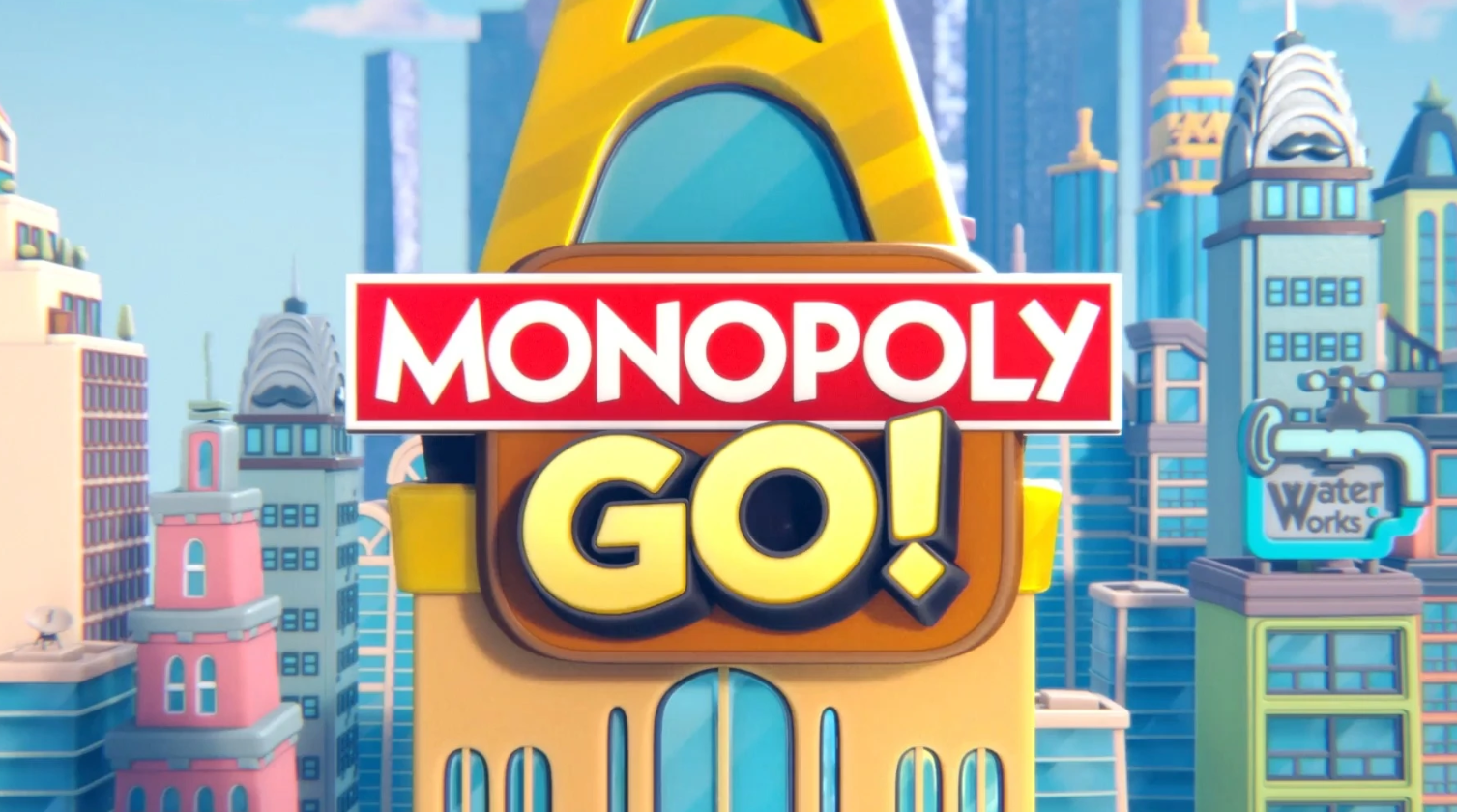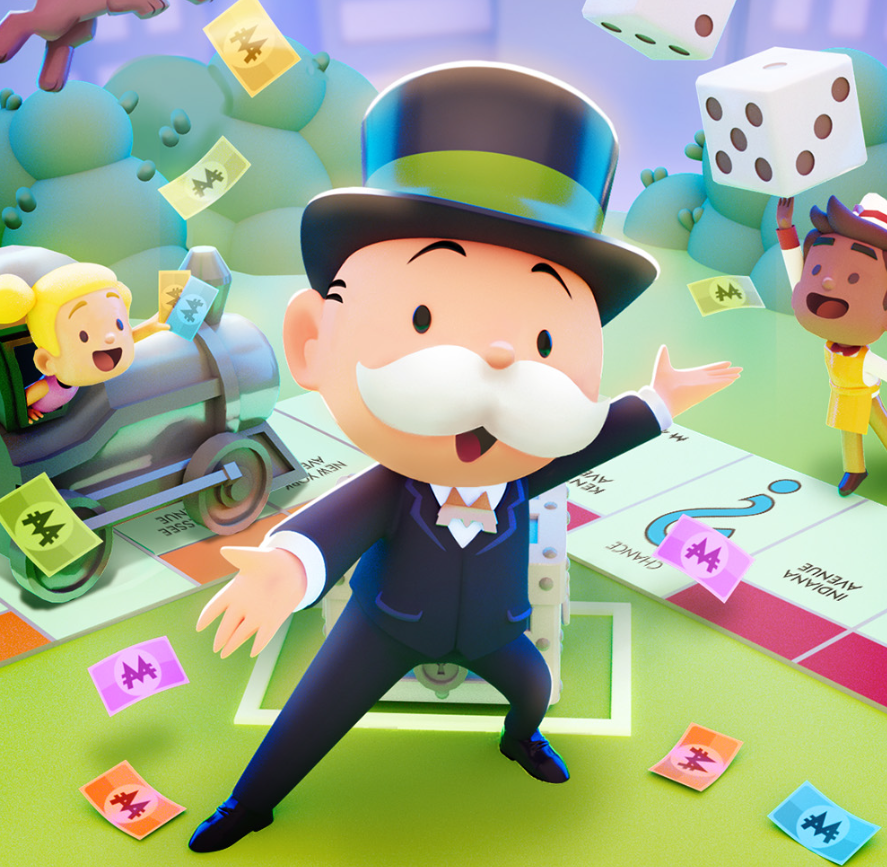Monopoly Go! – The 2023 Interactive Experience
Monopoly Go! – The 2023 Interactive Experience is a groundbreaking innovation in the realm of board games and digital gaming. Drawing inspiration from the classic Monopoly board game, it provides an immersive experience that transports players from their living rooms into a virtual world of property, finance, and strategy. As a blend of augmented reality (AR) and virtual reality (VR), Monopoly Go! has revolutionized the traditional gaming experience.
This 2023 release utilizes the latest AR and VR technology to create an interactive and realistic environment like never before. The players, equipped with VR headsets, enter an augmented world of Monopoly where they can walk around the board, negotiate with other players, and physically toss the dice. The game is designed to mirror the real world, with virtual real estate properties reflecting their actual geographical locations.
The gameplay is seamless and engaging, thanks to the state-of-the-art technology that enables real-time interaction with the game environment and other players. The AI-driven characters add another layer of complexity to the game, making it challenging for both beginners and seasoned players. Each move in Monopoly Go! requires careful thought and sound strategy, just like in the original Monopoly game.
One of the most intriguing features of Monopoly Go! is its adaptability to the player’s surroundings. The game can be played anywhere, at any time, whether in the confines of your home or while strolling in the park. The game adapts to the environment, altering the virtual landscape accordingly. This flexibility adds a dynamic aspect to the game, making each session unique and exciting.
In addition to its technological advancements, Monopoly Go! also stays true to its roots. The core rules of the original Monopoly game remain intact, ensuring that long-time fans of the board game are not alienated. The game maintains its fundamental essence of strategic planning, bargaining, and risk-taking, while the AR and VR aspects add an extra layer of excitement and immersion.
Furthermore, Monopoly Go! promotes social interaction and competition. The game encourages players to connect with each other, whether they are situated in the same room or halfway around the world. The game can be played in multiplayer mode, allowing friends and family to compete against each other in real-time. There is also an option for single-player mode, where one can compete against AI opponents.
A truly modern twist on a timeless classic, Monopoly Go! – The 2023 Interactive Experience is a testament to how far gaming technology has come. It retains the charm of the original Monopoly game while enhancing the overall gaming experience with the inclusion of AR and VR technology. The game seamlessly combines the physical and digital worlds, providing an immersive and interactive gaming experience that is both nostalgic and futuristic. Whether you’re a long-time fan of Monopoly or a newcomer to the world of board games, Monopoly Go! is sure to provide endless hours of fun, excitement, and friendly competition.

2023 Video Game – Overview and Introduction
In 2023, the landscape of the video game industry offers an electrifying and immersive universe of digital entertainment, replete with advanced technological innovation and creative narratives. The introduction of new genres and the evolution of existing ones have expanded the horizons of gaming, offering unparalleled user experiences that transcend the traditional boundaries of entertainment. The sheer variety of video games in 2023 is impressive, ranging from action-packed adventure games, intricate strategy games, to engaging role-playing games and beyond. The expansive multiplayer online games have created virtual societies where players from around the globe can interact, collaborate, and compete.
The integration of AI and machine learning in video game development has introduced a new level of dynamism and unpredictability, making the gaming experience more challenging and thrilling. Furthermore, the rise of virtual and augmented reality technologies has revolutionized the gaming landscape, providing players with a truly immersive and interactive gaming experience. Players can now traverse through fantastical realms, explore uncharted territories, and experience adrenaline-pumping scenarios – all from the comfort of their homes.
In 2023, the emphasis on narrative storytelling in video games has also deepened, with many games offering complex storylines and character development that rival those seen in films and literature. This has led to an increased appreciation of video games as a form of artistic expression and has elevated them to the status of a legitimate storytelling medium.
The video game industry in 2023 is not just about entertainment, it has also become a platform for social interaction and community building. Online gaming communities have grown in size and influence, fostering friendships and rivalries, and creating a shared culture and identity among gamers around the world. In essence, the 2023 video game landscape offers an exciting blend of technological innovation, immersive storytelling, and social interaction, making it a fascinating realm of digital entertainment.
Gameplay – Mechanics, Features, and Player Experience
Gameplay is a critical aspect of video gaming that directly impacts the player’s experience. It encompasses the rules, objectives, and interactive features of a game, and its quality often determines whether a game will be well-received or not. Key components of gameplay include mechanics and features. Mechanics refer to the system of rules and methods designed to create the desired gaming experience. They create the framework that governs player interaction with the game world and defines the actions, behaviors, and possible outcomes within the game. For instance, mechanics can dictate how characters move, interact with objects, combat opponents, or solve puzzles.
On the other hand, features are the tangible aspects that players directly interact with and can include everything from the game’s graphics and sound effects to its characters and storyline. Features provide the sensory and narrative components that bring a game to life and make it immersive and engaging for players. For instance, a game with stunning graphics, compelling characters, and an intriguing storyline can create a rich, immersive world that players want to spend time exploring.
The player’s experience, meanwhile, is the subjective perception and satisfaction a player derives from the gameplay. It’s shaped by the interplay between the game’s mechanics and features and the player’s personal preferences, abilities, and gaming style. For instance, some players might enjoy a game with complex mechanics and a high degree of challenge, while others might prefer a game with simpler mechanics and a strong narrative focus. Ultimately, the aim of good gameplay design is to create a satisfying, engaging, and memorable experience for the player. Therefore, understanding and implementing effective gameplay mechanics and features is a key aspect of successful game development.

Reception – Critical and Public Response
The reception, or the critical and public response, to a work, event, or initiative, often holds a significant influence over its subsequent success or failure. This can be seen across a variety of fields, from arts and entertainment to politics and business. In the world of arts, for example, the critical reception of a movie can greatly determine its box office performance or award prospects. Critics’ reviews, often published in reputable magazines or newspapers, hold a considerable sway over public opinion.
However, it’s not always that the critics’ perspective aligns with the public’s response. There are instances where a film may be panned by critics, but still be loved by the audience, leading to high box office earnings. Similarly, in the business world, a product’s reception, which includes customer reviews and feedback, can dictate its market performance. A product with positive reception is likely to enjoy high sales and customer loyalty. On the contrary, one with negative reception might see a decline in sales or even product withdrawal. This dichotomy between critical reception and public response also extends to the political arena where a policy or decision might be lauded by pundits but disliked by the general populace, or vice versa.
The careful management and evaluation of this reception, whether it’s positive or negative, is crucial for the concerned parties. They must be willing to listen, adapt, and evolve based on the feedback received to ensure continued success or improvement in the future. In essence, the reception serves as an important barometer of public sentiment and a valuable tool for future growth and development.
Sales – Commercial Performance and Market Impact
Sales significantly influence a company’s commercial performance and market impact. High sales volumes can often indicate a strong commercial performance, reflecting a company’s effectiveness in marketing, product design, and customer relationship management. On the other hand, low sales can suggest issues with product quality, market positioning, or customer perception. Sales also have a crucial role in shaping a company’s market impact, as they directly influence the company’s market share. A company with high sales volumes can exert considerable influence on market trends, customer expectations, and competitive dynamics. It can set standards for product or service quality, exert pricing pressure on competitors, and generally steer the market’s direction. Meanwhile, a company with low sales might struggle to make its presence felt in the market.
However, it’s important to note that a company’s sales performance is not solely determined by its efforts. External factors, such as economic conditions, technological changes, and social trends, can significantly affect sales outcomes. Therefore, companies must adopt a holistic approach to sales management, taking into account both internal and external factors. They need to continuously monitor market conditions, adapt their sales strategies to changing customer needs and preferences, and invest in innovation to stay competitive. By doing so, they can enhance their commercial performance and strengthen their market impact.

Development – Behind the Scenes of Creation
Development, often perceived as a straightforward process, is indeed a complex journey that unfolds behind the scenes of creation. It is an intricate orchestra of thoughts, ideas, and actions, each playing an integral role in the formation of something new and innovative. It involves the interplay of numerous variables, each contributing to the ultimate goal of creation from conception to completion.
Development is not merely a mechanical process; it is an intellectual journey that requires an in-depth understanding of the subject matter, meticulous planning, and an innovative approach. It is a blend of creativity and strategy that results in the creation of a unique product or service. It is also a process that requires continuous learning and adaptation to changing environments and trends.
Behind the scenes of development, there is often an immense amount of research and experimentation. It involves understanding the needs of the audience, identifying gaps in the market, and creating a product or service that fills those gaps. The development process also involves trial and error, with each failure providing valuable insights that lead to improvement and refinement.
Furthermore, development is not a solitary process. It involves collaboration and teamwork. Different minds come together, each bringing a unique perspective and skill set to the table. This synergy often leads to groundbreaking ideas and solutions that would not have been possible in isolation.
Moreover, development is a dynamic process that never truly ends. Even after the creation of a product or service, there is always room for improvement and adaptation. Continuous monitoring and feedback help in constantly refining and enhancing the product or service, ensuring its relevance and effectiveness.
In conclusion, development is a complex, creative, and collaborative process that takes place behind the scenes of creation. It is an exciting journey of discovery, learning, and growth that leads to the formation of innovative and valuable products or services.
Updates and DLC – Post-Launch Content and Improvements
Post-launch content and improvements, specifically updates and downloadable content (DLC), have become an integral part of the gaming industry. These elements are designed to enrich the gaming experience by adding new features, fixing bugs, and extending the lifespan of a game. Game developers often release updates to ensure that technical issues are addressed and the game runs smoothly. These updates may include patches that fix glitches or issues, or they could introduce new functionalities or elements to enhance gameplay.
On the other hand, DLCs offer a different form of post-launch content. They are typically substantial additions to the game, providing extra levels, characters, items, or storylines. DLCs usually come at an additional cost and are entirely optional, allowing players to choose whether to invest in this extra content. They contribute to the longevity of a game, keeping players engaged long after the original release, thus ensuring continuous revenue for the developers.
The strategy of providing updates and DLCs also helps in maintaining a strong relationship with the gaming community. It demonstrates the commitment of developers to create a better gaming experience, addressing player feedback and concerns. However, it is crucial that these post-launch contents are delivered fairly and ethically. Overpriced DLCs or updates that seem to fix issues that should not have been present at launch can lead to backlash from the gaming community.
Therefore, while post-launch content like updates and DLCs are an effective way to keep a game relevant and exciting, they need to be handled with care to ensure they add genuine value to the player’s experience. The goal should always be to enhance the game’s original content and not to appear as a means of extracting additional revenue from the gaming community. Balancing these aspects is key to a successful post-launch strategy.

Platforms – Available Systems and Compatibility
In the realm of digital technology, platforms refer to the fundamental hardware or software systems upon which applications or programs operate. These platforms, including Microsoft Windows, macOS, Linux, iOS, and Android, among others, provide the necessary base that allows for the development and execution of various software applications. The availability of these systems is extensive, with each providing unique features and functionalities to cater to diverse user needs, whether it is for personal use, business operations, or complex programming tasks.
However, not all applications or software are compatible with every platform. Compatibility, in this context, refers to the ability of a software application to function effectively on a specific platform. It’s important for software developers to consider the platform’s specifications and requirements when developing an application. For instance, a program designed for Windows may not work on macOS without specific modifications or the use of additional software to facilitate compatibility. This is because different platforms use different operating systems, each with its own set of rules and protocols for software operation.
The compatibility of software with various platforms is a key factor for developers to reach a wider audience and provide a seamless user experience. Hence, many developers opt for cross-platform development, designing software that can run across multiple platforms with minimal changes. Conversely, platform-specific development focuses on optimizing the software to work best on a particular platform, often resulting in superior performance but with a more limited user base.
Moreover, users should also consider compatibility when choosing a platform. For example, if a user depends on a particular software for their daily tasks, they must ensure that their chosen platform supports this software. Therefore, the dynamics of available platforms and software compatibility significantly influence the development, distribution, and utilization of digital applications and programs.
